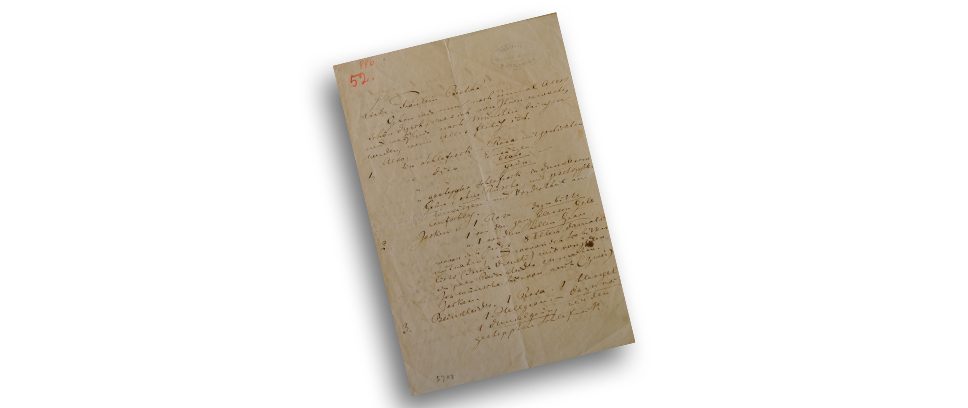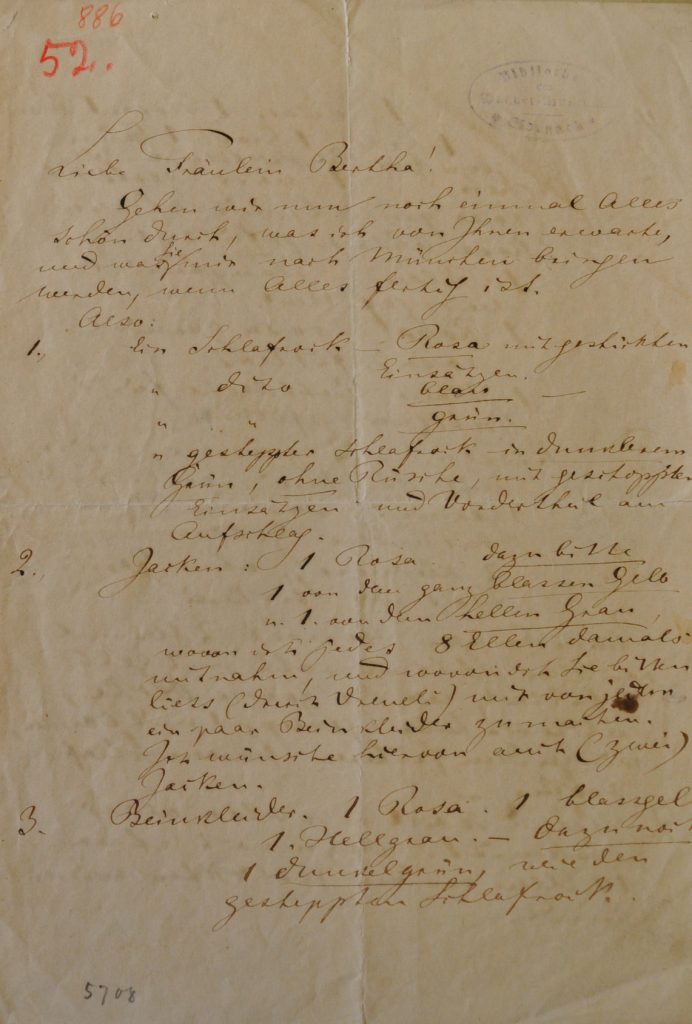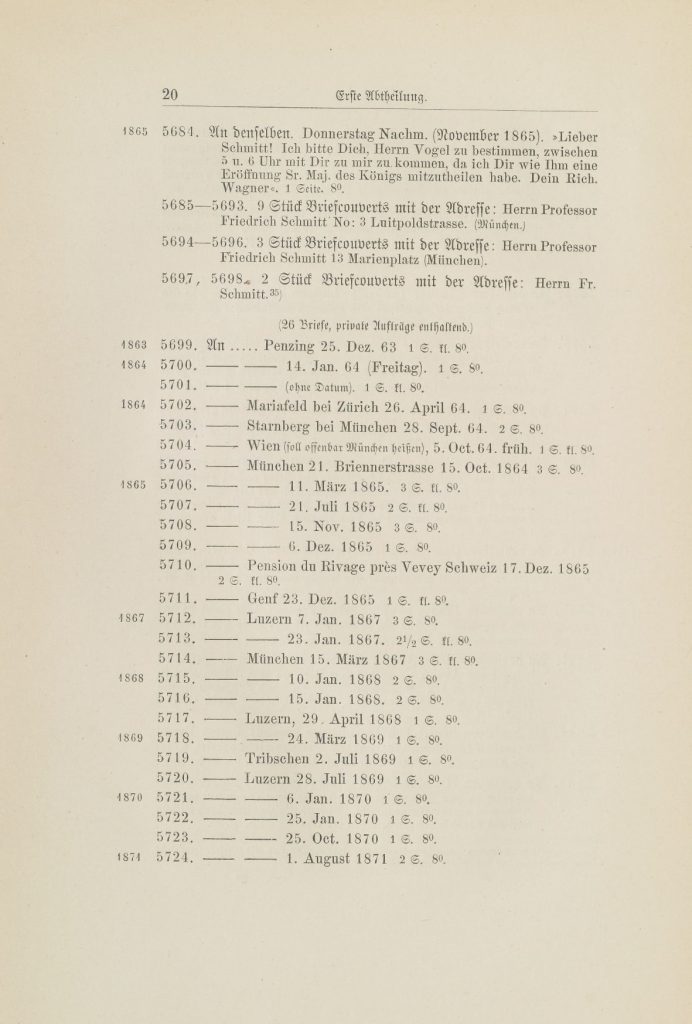
What’s that for? Richard Wagner’s Pink Dressing Gown
Stefan Alschner | 11 May 2022
Richard Wagner had a fondness for fine fabrics, preferably in the colour pink. And thus, he ordered a pink dressing gown from the milliner Bertha Goldwag. Stefan Alschner, research associate at the foundation Klassik Stiftung Weimar in the Marbach Weimar Wolfenbüttel Research Association, reports on Wagner’s famous garment and the relevance of a letter connected with it. The document belongs to the Reuter-Wagner-Museum in Eisenach and is part of the exhibition “Richard Wagner and the Nationalization of Feeling”.
Richard Wagner’s habit of spending outrageous sums of money for exquisite fabrics in often extravagant colours already earned him criticism and derision during his lifetime. Evidence of this fondness can be found in his letters to the milliner Bertha Goldwag. Wagner entrusted Goldwag with the task of making blankets, pillows and curtains for his flats in Vienna, Munich and Switzerland as well as tailoring clothing for him. The letters document Wagner’s propensity to console the milliner time and again about his outstanding payments and at the same time to place new orders. The great extent to which such an order could amount is reflected in a letter from 15 November 1865, in which Wagner orders several dressing gowns, breeches, pillows, blankets and other goods.

The “pink dressing gown” mentioned above achieved a certain amount of fame. While Wagner was still alive, the Viennese satirist Daniel Spitzer made fun of the composer’s fondness for fine fabrics, many in his preferred colour pink, by publishing the article Richard Wagner’s Letters to a Milliner. The “pink dressing gown” runs like a leitmotif through Spitzer’s text in which he quotes from the letters, causing outrage among the Wagnerians. However, the publication did not lead to a critical discussion of the composer’s financial conduct and his predilection for luxury. Instead, Spitzer’s Jewish background was singled out, thus constructing further evidence of how the Jews were attempting to discredit Wagner. A pattern of discussion that is still all too familiar today. Instead of presenting arguments to deal with a topic, the tactic is to spread doubts about the integrity of the other side.
In the Reuter-Wagner Museum in Eisenach there are several letters from Richard Wagner and from his housekeeper Verena Weidmann to Bertha Goldwag. The documents are from the collection of the Wagnerian Nikolaus Oesterlein from Vienna. The more than 25,000 objects that he collected between 1876 and 1895 form the basis of the stocks that are now kept in Eisenach.

Although Oesterlein certainly knew who the letters were addressed to, the name is omitted from the four volumes of the catalogue of his collection and replaced with three dots: “…”. Instead of the otherwise extremely detailed catalogue entries, often with extensive footnotes, the name of the addressee, Bertha Goldwag, has apparently been left out on purpose. Perhaps Oesterlein did not want to unnecessarily attract the attention of the Bayreuth Circle around Cosima Wagner, which would certainly have stopped at nothing to get their hands on the letters, which were damaging to Wagner’s reputation, in order to suppress them forever. It is to the Viennese collector’s credit that he preserved these documents for posterity despite their content, which is not always flattering for Wagner.
|
|
Stefan AlschnerStefan Alschner is a research associate at the Franz Liszt Academy of Music in Weimar working on projects for the analysis and digitalisation of the Richard Wagner collection of the Reuter-Wagner Museum in Eisenach. He is currently occupied as a research associate at the foundation Klassik Stiftung Weimar in the Marbach Weimar Wolfenbüttel Research Association. |
